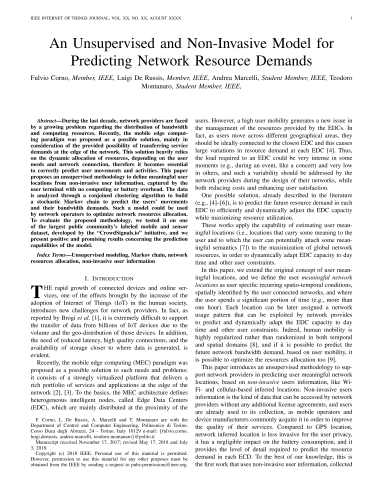Future generation networks will face ever increasing demands, of bandwidth and latency performance figures, to keep up with the growing requirements of a wider user base and the amount of IoT devices needing connection. Network infrastructure already depends on extensive caching and migration of resources (e.g., content delivery networks) to keep the desired contents "closer" to the user. However, as users move to different locations over their daily routines, and consequently switch network providers (home Wi-Fi, cellular on the road, work Wi-Fi, restaurant Wi-Fi, etc.), even "small" user movements might imply "large" networking differences.
The paper An Unsupervised and Non-Invasive Model for Predicting Network Resource Demands, that is due to appear on the IEEE Internet of Things Journal, develops an usupervised approach to detect "meaningful network locations" for a user, without using any additional data over what service providers already have, and allows predicting the future user locations (from the network point of view, without regard to the geographical location) and therefore optimize the required network resources. The machine learning approach is based on a conjoined clustering phase for detecting meaningful network location and their relevance in time, followed by a Markov chain model for estimating spatio-temporal transition probabilities. The work has been developed as a fruitful collaboration between members of the e-Lite group and of the CAD group at Politecnico di Torino.
More information:


